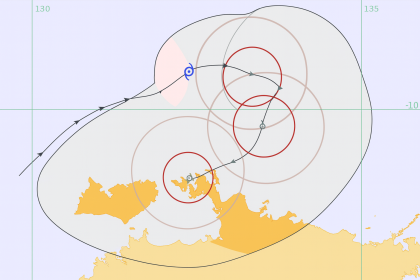
With the Northern Territory entering a heightened period of cyclone risk, AANT is urging drivers to prepare their vehicles early to ensure they are safe, secure and ready if severe weather strikes.
AANT CEO Simon Matthias said many Territorians focus on preparing their homes during cyclone season, but vehicle preparation is equally important — both to minimise damage and ensure safe travel if evacuation becomes necessary.
“Cyclones can develop and intensify rapidly, and once a warning is issued, it’s often too late to prepare properly,” Mr Matthias said. “We want motorists to take simple steps now so their vehicles are protected and ready to go should conditions change quickly.”
AANT’s key advice for preparing your vehicle for a cyclone:
1. Fuel up early
Ensure your fuel tank is full before a cyclone watch or warning is declared. Fuel stations may close, experience long queues or run low on supply during severe weather events.
2. Check your vehicle’s condition
Give your car a basic safety check to ensure it’s reliable during an emergency:
• Inspect tyre pressure and tread
• Confirm battery health
• Test headlights, brake lights and indicators
• Check windscreen wipers
• Top up oil, coolant and washer fluid
3. Secure or safely store your vehicle
• Park inside a garage or undercover structure wherever possible.
• Avoid parking near trees, powerlines or unsecured items that may become airborne.
• If you cannot shelter your vehicle, park on the sheltered side of your home and move loose objects away from the area.
4. Protect against flying debris
Remove or tie down anything around your home that could be picked up by strong winds and damage your vehicle. Keep windows closed and doors locked.
5. Prepare for a possible evacuation
Keep emergency essentials ready inside your vehicle, including:
• Important documents (licence, registration, insurance)
• A phone charger
• Water, snacks and medications
• A torch, first-aid kit, and basic tools
• A spare tyre and jack
6. Additional advice for EV and PHEV owners
AANT also reminds electric vehicle (EV) and plug-in hybrid (PHEV) drivers to take the following steps before a cyclone:
• Fully charge your battery early, as widespread power outages can leave home chargers and public charging stations unavailable for days.
• Ensure maximum driving range in case evacuation is required and charging infrastructure along major routes is offline or congested.
• Use your vehicle as an emergency power source (if equipped with V2L/V2H features) to run essential household devices such as fridges, lights, fans or medical equipment during outages.
• PHEV owners should top up their battery to conserve petrol when fuel stations may be closed or without power.
7. Review your insurance
Double-check that your vehicle insurance is current and provides cover for cyclone and storm-related damage. AANT recommends taking photos of your vehicle before severe weather for record-keeping.
8. Stay informed
Regularly monitor Bureau of Meteorology updates, NT Emergency Services alerts, and local news.
“Being prepared means acting early,” Simon Matthias said. “A few minutes spent now could save you stress, time and money when a cyclone approaches.


